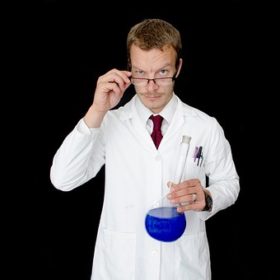
As we warned nearly two years ago, scientific evidence shows that many of the active ingredients used in sunscreens penetrate the skin and end up circulating systemically throughout the body. A new study conducted by FDA scientists recently published in the Journal of the American Medial Association (JAMA) found that this is exactly what happened when this question was put to the test. Read on to find out why this is important to your health.
The specific active ingredients that were studied were: avobenzone, oxybenzone, octocrylene, and ecamsule. Commentary on the study provided by JAMA editors was also interesting and insightful: “The authors found evidence of measurable systemic absorption of all 4 sunscreen ingredients at levels meeting the US Food and Drug Administration (FDA) guidelines to trigger a requirement for further systemic safety testing.” In other words, by the FDA’s standards these ingredients should be evaluated for safety as if they are ingestible drugs, rather than merely topical over the counter medications (or cosmetics).
Here is a key insight from the JAMA commentary, which we think also applies to most personal care products: “Sunscreen users reasonably presume that companies that manufacture and sell sunscreens have conducted basic studies to support the safety and effectiveness of their products and that the medical profession would demand high-quality evidence. However, sunscreens have not been subjected to standard drug safety testing, and clinicians and consumers lack data on systemic drug levels despite decades of widespread use.” […]
“In 2014, a public advisory panel convened by the FDA concluded that insufficient evidence existed to confirm the safety of many sunscreen ingredients and formulations.”

This study was also summarized in a more approachable article published on Wired.com, which also explains some of the historical and legal implications of the study. For example, the Wired article points out that “safety testing has never been done on the active ingredients in sunscreen, because those chemicals were approved decades ago, before anyone suspected they could be absorbed into the body.” Also from the Wired article:
“Everyone had always thought that because these are intended to work on the surface of the skin that they wouldn’t be absorbed, but they are,” says Theresa Michele, director of the FDA’s division of nonprescription drug products, and coauthor on the FDA-funded study. Her team found that it took only a few hours after the application of sunscreen for the photoprotective chemicals to infiltrate the bloodstream and shoot up to concentrations above the FDA’s toxicology threshold that triggers further safety testing.” […]
“They discovered that while it took only a few hours for the UV-blocking chemicals to spike over the target, for three of the four formulations, those levels remained elevated through the end of the study—three days after participants had ceased spraying and smearing.” [emphasis added]
However, where we emphatically disagree with the the Wired author and the JAMA editors is when they question whether this systemic circulation of sunscreen chemicals is harmful to human health. There is already substantial research evidence to show that several of these chemicals are indeed causing harm. The difference between our assessment and the assessment of FDA officials is, the FDA officials sugar coat the potential harm of these compounds while we do our best to spell it out with crystal clarity.
Now we know what it must have felt like for the folks trying to warn about the harms of smoking when the evidence was there, but the cigarette manufacturers poured money into covering up these facts and public health officials didn’t think it was part of their job. In this case, hopefully it doesn’t take the FDA another several years to catch up with these facts.

So what potential harm could these sunscreen active ingredients be causing?
Below are just a few of the studies that can be found in PubMed showing that these ingredients likely cause harm.
Avobenzone, which is perhaps the most common non-mineral “UV filter” sunscreen, has shown anti-androgen activity in in vitro studies. This mean it blocks the activity of male hormones, and thus it likely feminizes males and contributes to male infertility. We have published an entire separate article on the chemical feminization of males and the problem of male infertility.
Animal models have shown that octocrylene has both antiandrogenic and antiestrogenic activity. So in this case we are seeing chemicals that disrupt normal sex hormone function in both males and females.
Other animal models have shown that homosolate and several other “UV filter” sunscreens also antogonize (block) the androgen receptor.
Oxybenzone has been shown to be both estrogenic and harm reproductive health in both sexes, again in animal models. Not to mention the environmental contamination that resulted in the Hawaiian government banning this ingredient in sunscreen because of the damage it caused to coral and other organisms.
This is not just an animal and environmental problem either. The EWG provides a good summary of problems with sunscreens in their article The Trouble With Ingredients in Sunscreens. In particular I want to point out this description: “In a recent evaluation of CDC-collected exposure data for American children, researchers found that adolescent boys with higher oxybenzone measurements had significantly lower total testosterone levels (Scinicariello 2016).”
Unfortunately, there are not many scientific studies on Ecamsule, as this is a fairly new compound in the sunscreen industry and it is still under patent. We were unable to find any toxicology research for Ecamsule, which doesn’t mean that it is either safe or toxic, but only that there is no data to evaluate. However, we did find that Ecamsule is photo unstable and degraded with exposure to UV light, which implies that it might not be very effective as a sunscreen, or at least not for very long. So here’s what we say about it: If there are no studies to evaluate toxicity, then that means there are no studies that show safety either; which means no one knows if it is safe. And there is a study that implies it doesn’t work well. So basically each time you apply this to your skin, you’ve volunteered yourself as a lab rat for not a lot of benefit.

For the FDA or (JAMA editors) to claim that there is not enough evidence to determine if (most of) these active chemical ingredients are causing harm is about as astute as a box of rocks. The evidence is out there, it is just not necessarily in the neat and tidy bow tied package and filled out on the proper government form that regulatory agencies want.
So it is up to all of us to protect ourselves, our families, and our planet. Make certain the sunscreen you use is safe by reading both the active and inactive ingredients. Our Shield SPF15 sunscreen is made using only safe ingredients, but there are certainly other options out there. Just make sure that whatever you use does not have ingredients that can harm health, and is from a producer whom you can trust.
For Health,
Rob
Nature's Complement is a participant in the Amazon Services LLC Associates Program, an affiliate advertising program. If you purchase products on Amazon through any of our affiliate links, we get a small percentage of the transaction, at no extra cost to you. We spend a lot of time writing the articles on this site, and all this information is provided free of charge. When you use our affiliate links, you support the writing you enjoy without necessarily buying our products. (However we would appreciate if you would do that too!) Thank you for helping to support our work, however you choose to do so.
These statements have not been evaluated by the Food and Drug Administration. This information and/or products are not intended to diagnose, treat, cure or prevent any disease.


